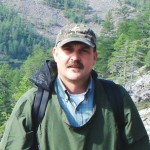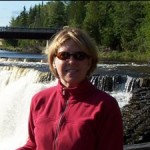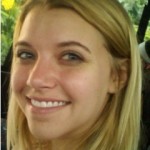Biographies
 Dr. Jon Ranson is an earth scientist specializing in radar, lidar and remote sensing. He uses these tools for studying vegetation type and biomass in ecosystem research. He is NASA Goddard Space Flight Center DESDynI Lidar Project Scientist and Head of the NASA GFSC Biospheric Sciences Branch in Greenbelt, Maryland. Under his guidance the Branch is advancing the use of satellite technology to study the carbon cycle and ecosystem science. Dr. Ranson is traveling to Maine in support of the DESDynI mission. He will help collect basic forest measurements in order to validate data recently acquired from aircraft lidar and radar in these forests, so that the algorithms for remote sensing can be improved and the carbon budget better understood. Dr. Ranson has participated in numerous field campaigns in the United States, Canada and Siberia to improve our ability to measure and monitor vegetated ecosystems from space. He enjoys hiking, birding, music and outdoor cooking.
Dr. Jon Ranson is an earth scientist specializing in radar, lidar and remote sensing. He uses these tools for studying vegetation type and biomass in ecosystem research. He is NASA Goddard Space Flight Center DESDynI Lidar Project Scientist and Head of the NASA GFSC Biospheric Sciences Branch in Greenbelt, Maryland. Under his guidance the Branch is advancing the use of satellite technology to study the carbon cycle and ecosystem science. Dr. Ranson is traveling to Maine in support of the DESDynI mission. He will help collect basic forest measurements in order to validate data recently acquired from aircraft lidar and radar in these forests, so that the algorithms for remote sensing can be improved and the carbon budget better understood. Dr. Ranson has participated in numerous field campaigns in the United States, Canada and Siberia to improve our ability to measure and monitor vegetated ecosystems from space. He enjoys hiking, birding, music and outdoor cooking.
Dr. Guoqing Sun received the B.S. degree in physics from the University of Science and Technology of China, Beijing in 1970, the M.Sc. degree in remote sensing from Nanjing University of China, Nanjing in 1981, and the Ph.D. degree in geography from the University of California, Santa Barbara in 1990. He is currently a research professor at the University of Maryland College Park and is also affiliated with NASA GSFC Biospheric Sciences Branch. His research interests include land cover and land use change studies from radar and optical remote sensing data, surface height and vegetation spatial structure from interferometric synthetic aperture radar and lidar, modeling of radar backscatter and lidar waveforms from forest stands, and development of algorithms for forest parameter retrieval from the fusion of these data. He started his research with radar backscatter modeling and application of SIR-B SAR data in forest ecosystem in Mt. Shasta, California in 1984. He has participated in BOREAS project in Canada, and SIR-C studies in Maine, USA during the 1990’s. Since 2000, Dr. Sun has contributed to several NASA projects dealing with land cover mapping and forest monitoring in northeast China and the Russian far east and collaborated on NASA GSFC Siberian research projects. He is currently a Principal Investigator or Co-Investigator of several research projects related to NASA ICESat-2 and DESDynI missions.
Dr. Bruce Cook is a physical scientist in the Biospheric Sciences Branch of NASA Goddard Space Flight Center in Greenbelt, Maryland. He received a Ph.D. degree from the University of Minnesota in Natural Resources Science and Management, specializing in Assessment, Monitoring and Geospatial Analysis. He has also earned the M.S. in Soil Science and a B.S. in Biology. As a remote sensing scientist with expertise in biology, meteorology, and natural resource management, Bruce’s research has focused on the quantification of forest biomass, plant production, and exchange of CO2 and water vapor between the atmosphere and the biosphere using a combination of field measurements, computer simulations, and satellite imagery. The goal of his work has been to understand how terrestrial ecosystems function, to determine how these systems respond to land use and disturbance and to predict the influence and feedbacks of climate change on regional to global scales. His most recent research involved the collaboration of colleagues from the USA and Norway to develop laser remote sensing methods to characterize the complex 3D structure, composition, and function of vegetation in upland and wetland plant communities. Bruce joined NASA in May 2009, and having just moved from Minnesota was very excited to trade the heat and humidity of the D.C. area for the mosquitoes of Maine during this field campaign.
Mr. Paul Montesano specializes in the use of remote sensing and geospatial tools primarily for identifying and monitoring terrestrial changes. He received his undergraduate degree from Rutgers University in Geography and his master’s from the University of Wisconsin-Madison in Environmental Monitoring. While at the Walton Center for Remote Sensing and Spatial Analysis at Rutgers and at the Environmental Remote Sensing Center at UW-Madison, his research dealt with large-scale (state-level) habitat and resource assessments including delineation of ephemeral wetlands, mapping estuary habitats, and satellite estimates of inland-lake water quality. His work in the NASA GSFC Biospheric Sciences Branch has focused on regional and continental-scale mapping of the northern boreal forests. Paul spent a portion of the summers of 2007 and 2008 running the Kochechum and Kotuy Rivers as part of NASA expeditions to collect tree metrics in the wild country of larch forests of northern Eurasia. On these expeditions he learned that mosquitoes help him remain a reluctant enthusiast and that (modifying E. Abbey), “There is science, logic, reason; there is thought verified by experience. And then there is… Siberia.”
Dr. Ross Nelson is a physical scientist who works for the Biospheric Branch of the NASA Goddard Space Flight Center in Greenbelt, Maryland. He completed his B.S. in Forestry at the University of Maine, Orono, his Master’s in Forestry/Remote Sensing at Purdue University and earned his Ph.D. in Forestry/Biometrics at Virginia Polytechnic Institute and State University. He has several areas of research. One important area is the use of airborne laser data to characterize the forest canopy and estimate forest biomass, volume and carbon. He is also working to use moderate and high-resolution satellite data to monitor tropical and subtropical forest conversion. Ross is also developing statistical and image processing procedures for continental and sub-continental resource assessment using satellite imagery. In 2003, Maryland Governor Martin O’Malley, then Mayor of Baltimore, presented a Community Service Award to Ross, in honor of hi s thousands of hours of volunteer service as a paramedic for Laurel Fire and Rescue.
Mr. Zhiyu Zhang received his B.S. in Applied Physics in the University of Mining and Technology of China and his Masters in Cartography and Geographic Information System in Beijing Normal University (BNU). His research interest is the application of radar and lidar data in forest parameter estimation. He has participated in several research projects on forest parameters mapping in China. He has also joined in several field expeditions in the Qilian Mountains in Northwest China and Daxinanling and Changbai Mountains in Northeast China. He is currently a visiting Faculty Research Assistant in Department of Geography, University of Maryland, College Park, USA.
Dr. Wenge Ni-Meister is a Professor at Hunter College of The City University of New York and currently is working with NASA Goddard’s Space Flight Center in Greenbelt, Maryland as a research scientist in the field of remote sensing. He research centers on ecosystem-climate interactions, with a focus on utilizing remote sensing data with land surface biophysical and ecosystem process models for better understanding and predictions of ecosystem processes.
 Dr. Yong Wang is an Associate Professor at East Carolina University, Thomas Harriot College of Arts and Sciences, Department of Geography in Greenville, North Carolina. He received his B.S. in Electrical Engineering from Northwestern Polytechnic University in 1982, his M.A. in Geography from the University of California at Santa Barbara in 1989, and his Ph.D. In Geography from the University of California at Santa Barbara in 1992. His primary interests are in remote sensing, GIS and image processing and analysis.
Dr. Yong Wang is an Associate Professor at East Carolina University, Thomas Harriot College of Arts and Sciences, Department of Geography in Greenville, North Carolina. He received his B.S. in Electrical Engineering from Northwestern Polytechnic University in 1982, his M.A. in Geography from the University of California at Santa Barbara in 1989, and his Ph.D. In Geography from the University of California at Santa Barbara in 1992. His primary interests are in remote sensing, GIS and image processing and analysis.
Dr. Sassan Saatchi is a senior researcher with NASA Jet Propulsion Laboratory, California Institute of Technology, Radar Science and Engineering Section. He is also affiliated with UCLA Institute of the Environment and with the UCLA center for Tropical Research. He has been a principal investigator on several interdisciplinary international projects including FIFE, EFEDA, Magellan, MacHydro, Hapex-Sahel, BOREAS, LCLUC and LBA, where he contributed by developing the remote sensing techniques for measuring regional scale ecological and hydrological variables. He has also participated and contributed in developing the concepts and design of several satellite sensors launched by NASA. Sassan is currently a member of the science advisory group of the European Space Agency’s BIOMASS and NASA’s DESDynI mission. Both missions are being designed to measure many biophysical variables, including forest structure and biomass on regional and global scales.
 Dr. Kathleen Bergen is a research scientist at the University of Michigan. Her focus is in forest and landscape ecology and applied remote sensing. She previously worked on the NASA SIR-C/X-SAR biomass campaigns and led NSF research using remote sensing-derived forest structure in avian habitat modeling. She is currently a Co-Investigator on NASA Terrestrial Ecology radar-lidar projects. She also continues to be active in research for the NASA Land-Cover/Land-Use Change program in Siberia and China. Kathleen also participates in travel and music activities.
Dr. Kathleen Bergen is a research scientist at the University of Michigan. Her focus is in forest and landscape ecology and applied remote sensing. She previously worked on the NASA SIR-C/X-SAR biomass campaigns and led NSF research using remote sensing-derived forest structure in avian habitat modeling. She is currently a Co-Investigator on NASA Terrestrial Ecology radar-lidar projects. She also continues to be active in research for the NASA Land-Cover/Land-Use Change program in Siberia and China. Kathleen also participates in travel and music activities.
Mr. John Lee has had a life-long interest in the environment and outdoor activities. John manages the office, lab and field sites of the Environmental Physics Group at the University of Maine. Among other activities, John is responsible for the operation and maintenance of research towers and other infrastructure, data acquisition systems, instrumentation, telecommunication and network systems, data integrity, and organization of logistical and field support for research efforts involving outside collaborators. John is the primary contact for data and field work at Howland Forest.
 Ms. Chelsea Robinson is a recent graduate from UCLA’s undergraduate Geography department, with a Geography/ Environmental Studies degree. Her research interests include biogeography, plant ecology, and remote sensing. She has done field work in the tropical dry forest of Hawaii, as well as native scrub in Southern California. Since early 2009, she has been working as a research assistant under Dr. Sassan Saatchi of NASA’s Jet Propulsion Laboratory aiding in satellite image manipulation and data compilation, particularly in areas in the Sierra Nevada mountain range and Alaska.
Ms. Chelsea Robinson is a recent graduate from UCLA’s undergraduate Geography department, with a Geography/ Environmental Studies degree. Her research interests include biogeography, plant ecology, and remote sensing. She has done field work in the tropical dry forest of Hawaii, as well as native scrub in Southern California. Since early 2009, she has been working as a research assistant under Dr. Sassan Saatchi of NASA’s Jet Propulsion Laboratory aiding in satellite image manipulation and data compilation, particularly in areas in the Sierra Nevada mountain range and Alaska.
 Ms. Kelly Easterday is entering her third year at the University of California Los Angeles where she is majoring in Geography/Environmental Studies with a minor in Geospatial Information Systems and Technologies. Kelly is currently a habitat restoration intern at the University of California Santa Barbara’s Coal Oil Point Reserve. In the winter of 2009 she worked on a remote sensing project for Dr. Thomas Gillespie that measured the effectiveness of park management in Honduras. In the summer of 2008 Kelly traveled to the Eastern Sierra Nevada Mountains where she performed a watershed study related to the diurnal melting patterns of glacial versus those of snow melt. Kelly has been named an Academic All American for two consecutive years while helping lead the UCLA Bruins Women’s Water Polo team to two national championships.
Ms. Kelly Easterday is entering her third year at the University of California Los Angeles where she is majoring in Geography/Environmental Studies with a minor in Geospatial Information Systems and Technologies. Kelly is currently a habitat restoration intern at the University of California Santa Barbara’s Coal Oil Point Reserve. In the winter of 2009 she worked on a remote sensing project for Dr. Thomas Gillespie that measured the effectiveness of park management in Honduras. In the summer of 2008 Kelly traveled to the Eastern Sierra Nevada Mountains where she performed a watershed study related to the diurnal melting patterns of glacial versus those of snow melt. Kelly has been named an Academic All American for two consecutive years while helping lead the UCLA Bruins Women’s Water Polo team to two national championships.
Dr. Joanne Howl received her D.V.M from the University of Tennessee College of Veterinary Medicine, Knoxville, Tennessee in 1987. She has practiced clinical veterinary medicine, worked in veterinary emergency response and is a writer and editor in the pet health and science fields. Currently she is employed as a Support Scientist, Chief for Sigma Space. This is her third year blogging for the Earth Observatory in support of NASA field campaigns.
Also participating are:
Dr. Jeremy Rubio, University of Maryland
Mr. Qiang Fu, UCLA
Ms. Corie E. Lahr, UCLA
Ms. Lisa Calhoun, UCLA
Mr. John Brissette, USDA Forest Service
Mr. Bob Wagner, University of Maine
Mr. Matthew Olson, University of Maine
Mr. Alan Kimbell, University of Maine
Mr. Robin Avery, University of Maine
Mr. Bob Seymor, University of Maine
Mr. Rick Dionne, USDA Forest Service
Ms. Laura Kenefic, USDA Forest Service



